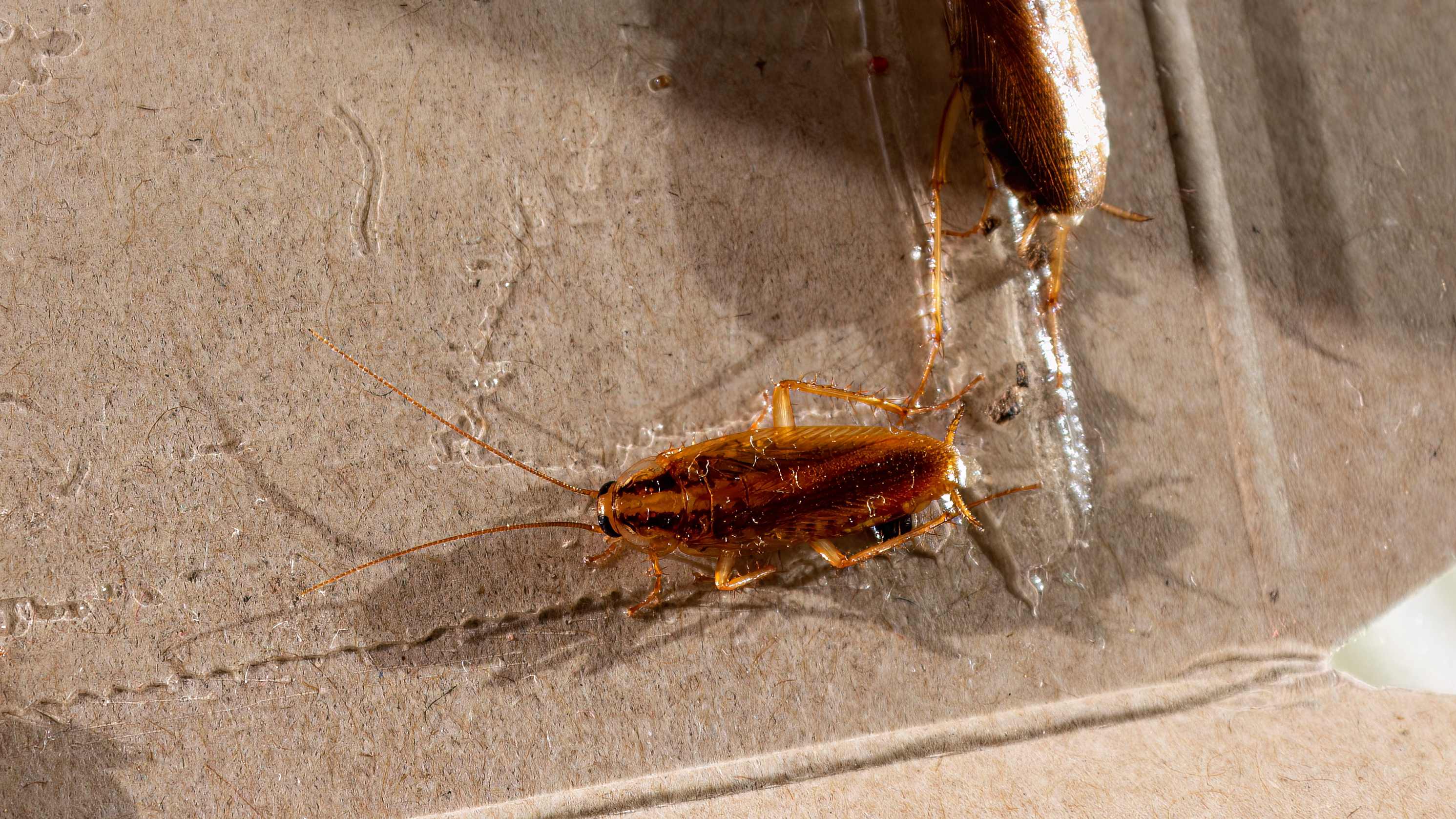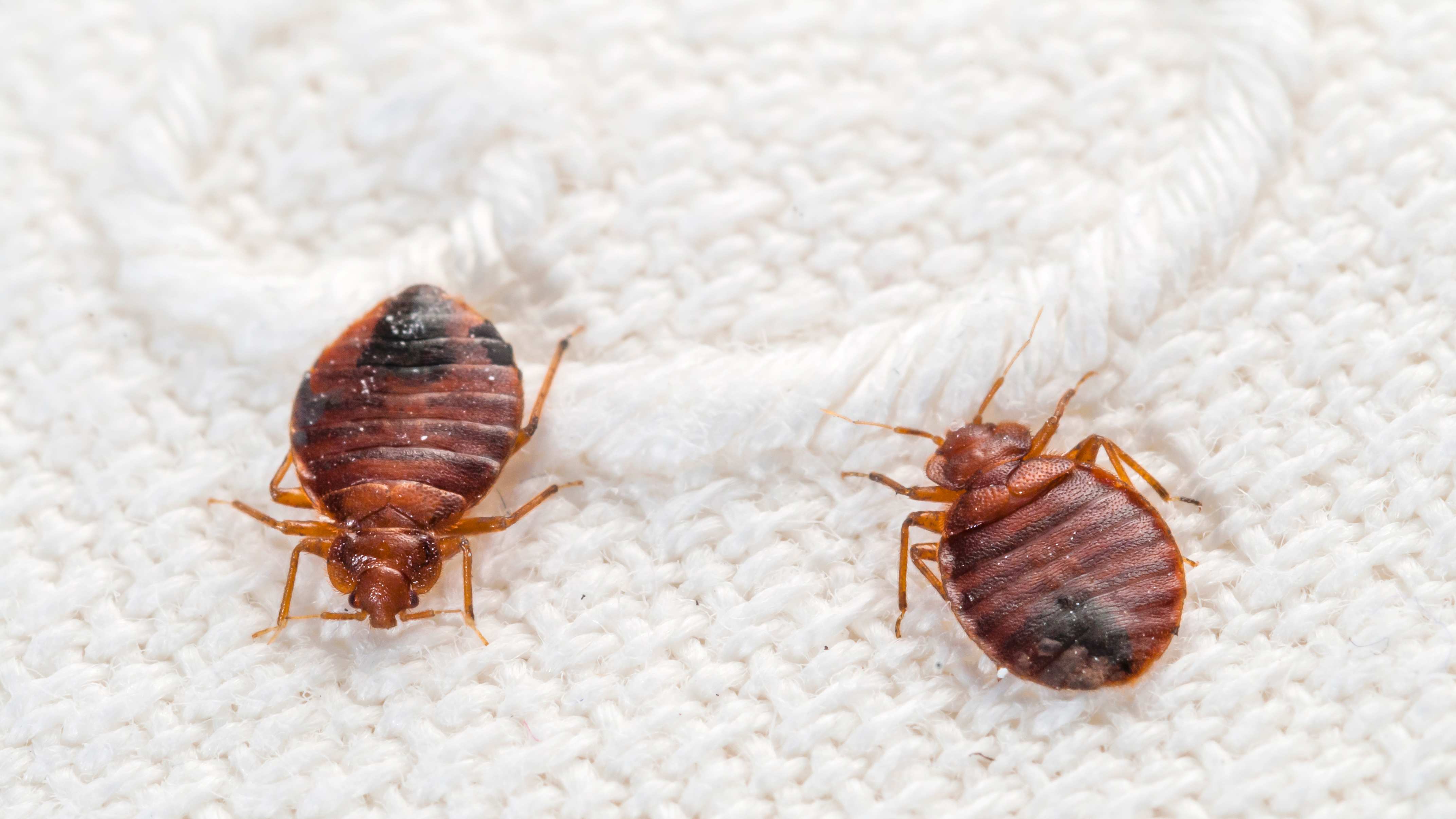
Whether you have bugs, bats, or rodents invading your home, you’ll want to contact an exterminator quickly. Find out how much pest control costs.
Good for paws, bad for bugs


Cockroaches raise a conundrum for pet owners. Roaches are bad for pets because they can spread diseases or even parasites when in close proximity. But many roach pesticides are also dangerous for pets, causing sickness or irritation when exposed. What’s a pet parent to do?
The key is roach killers that get the job done without posing harm to pets. Those include diatomaceous earth, glue traps, and carefully placed bait among other solutions. Check out these pet-friendly ways to kill cockroaches to find the best choice for you.
Your pet probably isn’t responsible for your roach infestation, but having pets and small children can make roach problems more likely. Here are a few reasons that they set up shop in your home:
Leftover pet food: Dry pet food leftover in the bowl or accidentally scattered across the floor can easily draw in roaches.
Open entrances like doggy doors: Unfortunately, doggy doors and leaving doors or windows open for pets can act like a main entrance for roaches, giving them easier access. That’s compounded if there’s debris or trash nearby outside where roaches can wait.
Infestation of a nearby apartment or building: If a nearby apartment or connected building gets infested, it’s likely that roaches will start entering your home, too. Watch for any signs or notices that other buildings are dealing with roach problems.
Insulation and plumbing holes: Pests can squeeze through cracks and gaps, which often occur around insulation lapses where pipes go through walls. Serious sealing problems like these are bad for your home but great at encouraging roaches.
Water problems: From leaks and dampness to overturned pet water bowls, the presence of moisture will draw in roaches and make it harder to get rid of them. Combine dark corners or crawlspaces with water issues, and roaches can prove very hard to get out entirely.
Unfortunately, some of the most popular treatments for cockroaches, like Borax or boric acid, are at least mildly toxic to pets and you don’t want them trying to lick it up or accidentally getting it all over their paws. So where does that leave you? With these pet-safe options:

Roaches that come in contact with diatomaceous earth will be cut by its sharp edges and dehydrated, dying if they linger. That makes it a great non-toxic deterrent to spread where you’ve found roaches and use it to create barriers in at-risk spots.
Diatomaceous earth can cause some irritation to pets if they inhale it or get it in their eyes, so it’s a good idea to keep it away from their play areas or where they frequently walk. You can get the Diatomaceous earth damp, daub it on the floor, or spray sprinkled earth with water to make it harder to spread around.
When you purchase diatomaceous earth, you may have a choice between different grades or purities. Look for those that are rated to be around food or in kitchens as the safest option to deal with your roaches.
The key to using bait traps in a pet-friendly household is placement. Bait traps work well over an extended period of time as long as pets can’t reach them to play with or eat them.
Gel bait that you can squirt from a tube should be used carefully. It’s very important to place it only in areas where a pet paw cannot reach, or there’s a real risk that pets will lick it up.
Some pet-safe placement options include:
Under the refrigerator
Cupboards (remove food from these cupboards first)
Pantries or closets that are closed to pets
Backside of appliances

Glue traps are what they sound like: They use bait to attract roaches onto a surface covered in sticky glue, and trap them there for disposal. Today’s versions are often non-toxic and safe to use around pets. They don’t present much danger and they’re budget-friendly.
The only downside to glue traps is that they may not be effective if you have a serious roach infestation, in which case it’s time to hire a local pest control professional.
Your pets may hate the vacuum, but cockroaches hate it even more. Use a vacuum to suck them up for a quick disposal. Then, clean the surfaces where you spotted the roaches and make it less likely that they’ll return. It’s all pesticide-free, of course, but it’s not a comprehensive solution. You’ll need to combine vacuuming with more long-term removal methods, which requires hiring a local pest control pro.
Once banished, it’s important to make sure roaches can’t return. These important steps can prevent a future infestation:
Seal all entry points: Make sure all gaps are sealed in your home, especially where roaches could enter through plumbing holes, gaps in doorways and basement, or crawlspace openings. While some ventilation is important to discourage humidity, you don’t want to leave low-to-the-ground gaps that a roach could squeeze through.
Clean up pet food quickly: The longer food sits out, the better chance pests will find it. Clean up after cooking and don’t leave food or pet food out overnight. If your pet hasn’t finished, toss what’s left. Sweep up any crumbs or bits of food that may have made it to the floor.
Store food in sealed bags: Never leave food in open containers, including kibble and other pet food. It goes bad faster and it will attract bugs like cockroaches. Seal it all up tightly and replace the original packaging with containers if necessary.
Fix any moisture problems: Cockroaches love moisture and will happily call a damp place home. Getting a bunch of roaches sticking around is a sign that you may have moisture issues, including hidden leaks.
Consider roach repellents: Many of our pet-friendly solutions work great as repellents to remove roach threats, or for sprinkling under appliances where roaches like to hide. You could also call pest control and discuss what kind of chemical barriers or other options could help keep roaches away in your home.
From average costs to expert advice, get all the answers you need to get your job done.

Whether you have bugs, bats, or rodents invading your home, you’ll want to contact an exterminator quickly. Find out how much pest control costs.

If you discover a wasp nest near your home, you’ll want to remove it ASAP. Learn wasp nest removal cost factors in this guide.

Sometimes birds nest in unwelcome places. Find out how much bird nest removal will cost based on factors like location, bird species, and preventative measures.

Wondering how to get rid of flies outside? Here are a few ways to successfully repel them from your yard.

Heat treatments for bed bugs is one of the best ways to eradicate these resilient pests. Learn how heat treatments work, pros and cons, and more.

Not sure which pests you’re finding in your home? Review this guide to learn the key differences between termites vs. ants and how to prevent them.